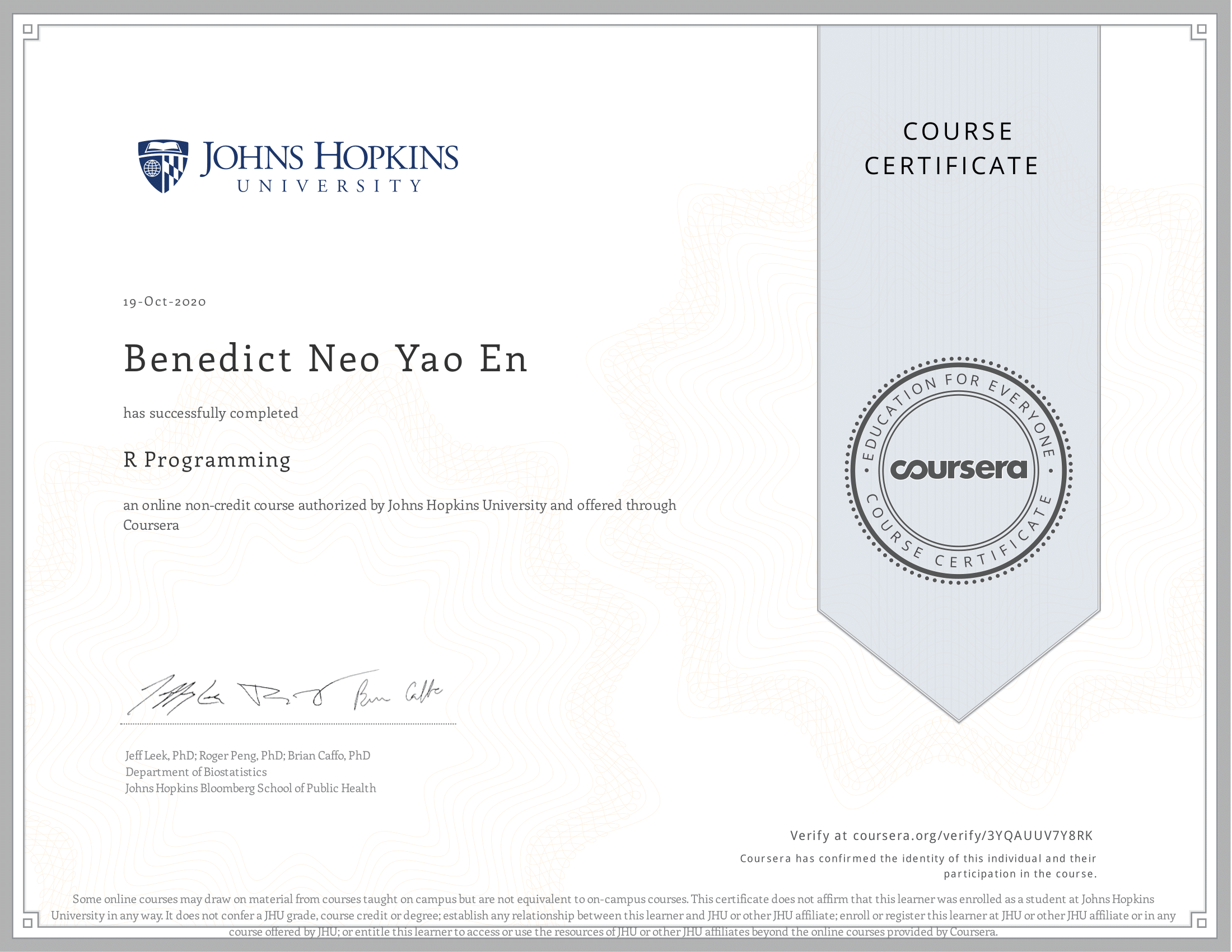Course Description
In this course you will learn how to program in R and how to use R for effective data analysis. You will learn how to install and configure software necessary for a statistical programming environment and describe generic programming language concepts as they are implemented in a high-level statistical language. The course covers practical issues in statistical computing which includes programming in R, reading data into R, accessing R packages, writing R functions, debugging, profiling R code, and organizing and commenting R code. Topics in statistical data analysis will provide working examples.
Articles
Articles are coming!
What I’ve learned
I’m a beginner in Python, and this course was very beginner friendly in introducing the R programming language to me. At first the syntax was quite hard to get used to, but I found it very intuitive and easy to use afterwards, especially with the tidyverse packages. To name a few of the things I’ve learned that I found particularly useful - Dates and times, data manipulation w the Dplyr package, scoping rules, loop functions, regex, profiling code, simulating data, and parallel computation. The assignments were harder that I imagined and were time-intensive for me. Overall this course was quite dense and I learned a lot from it.
Projects
The main goal of the 3 projects were to give write functions to interact with data for various purposes, writing functions is a useful skill when working with certain tasks that aren’t given in pacakges.
| No | Project Title | About |
|---|---|---|
| 1 | Air Pollution | Writing functions to interact with Air pollution data |
| 2 | Cache Matrix | Writing a function to cache inverse of a matrix |
| 3 | Hospital Ranking | Writing functions to rank hospitals by mortality rate |
Proof of completion
